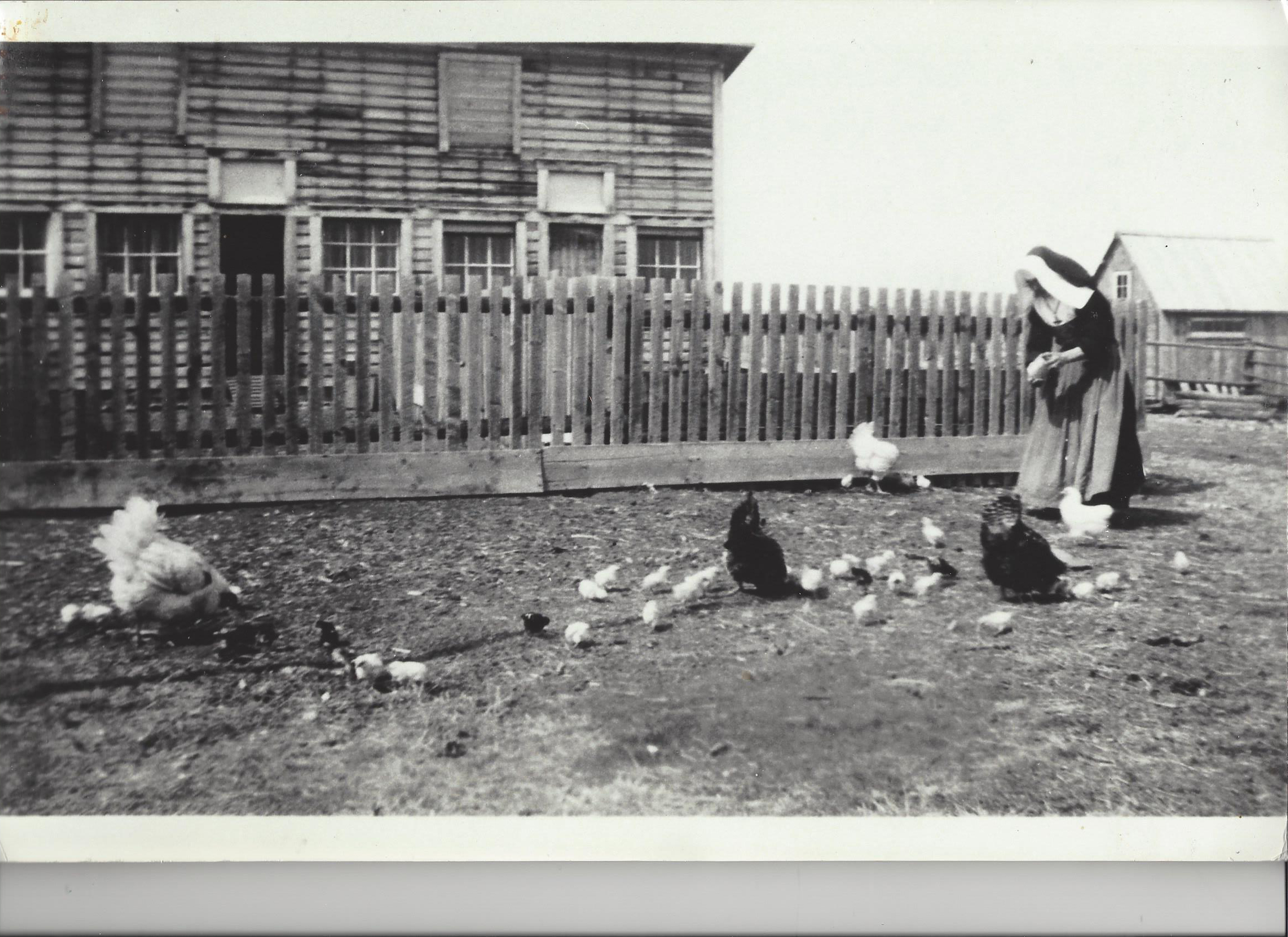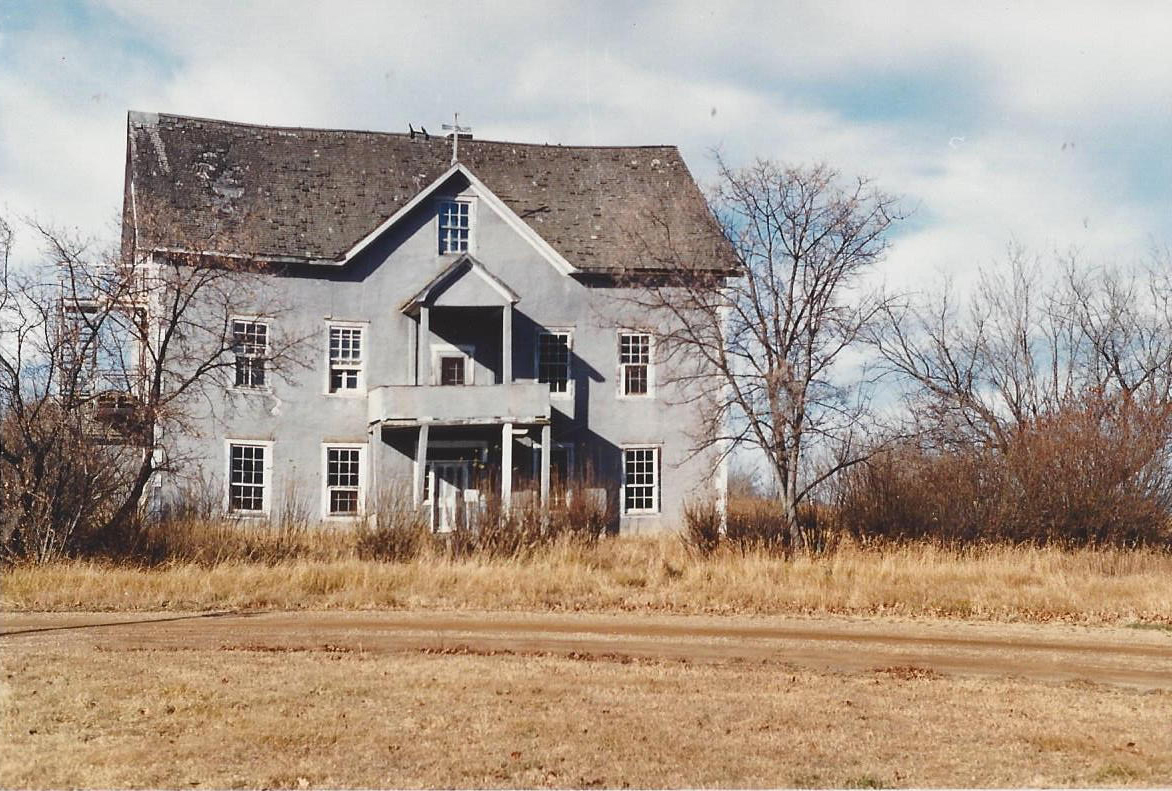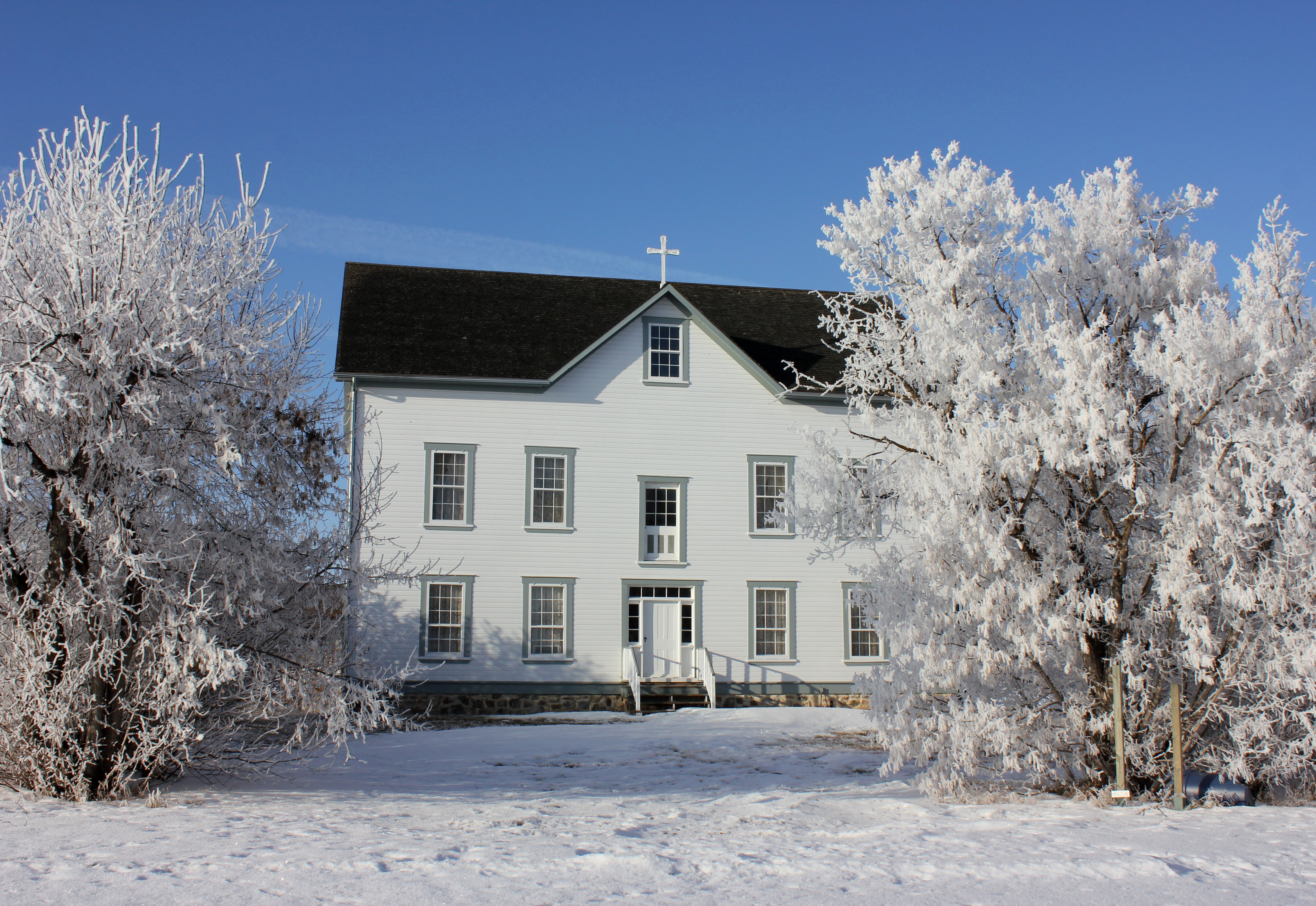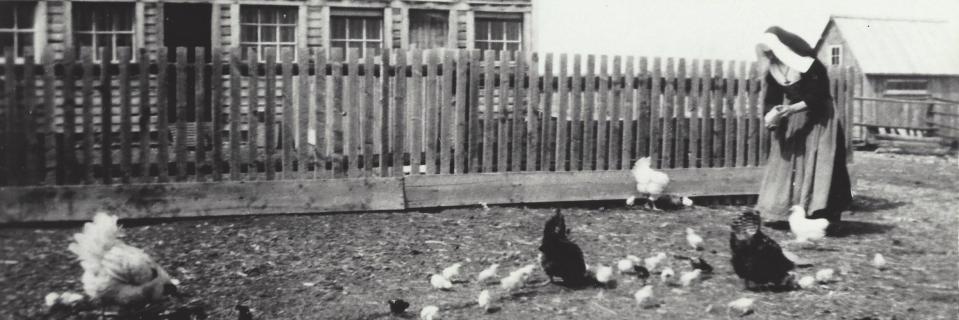Situated on the scenic shores of Lac La Biche Lake, you will find the Lac La Biche Mission Historic Site (Notre Dame des Victories), located in Alberta, one of Canada’s Prairie Provinces. At first glance the importance of the site, in relation to the history of the province, may not be apparent, nor how it embodies the themes of sustainability and community. This article will briefly explore the important roles that transportation, agriculture, and community played in the establishment and growth of the Mission, its decline, and its eventual transformation into a historical site.
From the beginning, the Lac La Biche Mission was the heart of a greater community made up of priests, brothers, nuns, school children, and families who had settled around the site. In 1853, the Mission was founded by the Oblate order of Roman Catholic priests, near the Hudson’s Bay Company Trading Post in what would later become the hamlet of Lac La Biche. The priests soon realized that the original site was unsuitable for farming, so they relocated the Mission to its current position, approximately 12 km from Lac La Biche, in 1855. Over the following decades, the Lac La Biche Mission would become the heart of the Oblates’ northern Alberta territory, a central warehouse integrated into a vast river and land transportation network.
In 1856, Fathers Tissot and Maisonneuve began cutting a cart road from the Mission to Fort Pitt, which would connect it to the Red River cart brigades. By 1867, the Mission built its first scow and sent it down the La Biche River into the Athabasca, testing the traders’ ability to navigate the route. Establishing this route was necessary to move much needed supplies from the south to Oblate missions further north, where the ability to produce food was more limited. From 1870 until 1889, a caravan of 10-20 carts pulled by oxen and supervised by three or four local Métis men from the Mission would make an annual trip to bring back supplies from Fort Pitt to the Mission. These supplies were stored at the Mission’s “Grand Hanger”—a large two-story warehouse. In spring, these supplies were loaded onto barges and sent to the northern missions.
 for full image.](https://rootstalk.blob.core.windows.net/rootstalk-2018-spring/mueller-1-volume-iv-issue-2.jpg)
Lac La Biche Historical Site, 2017, by Jennifer Mueller. Click here for full image.
Although the transportation network established by the priests brought in necessary supplies, the Oblates believed agricultural production was essential to the development and sustainability of the Mission, and as a means to secure additional food for the missions further north. The Mission was expected to be self-sufficient and to do so required growing crops. This was not always an easy mandate to fulfill. In the early years, the Mission lacked both tools and draft animals. Despite these limitations, by 1856, just a year after settling on this site, they grew a modest crop of potatoes, barley and turnips. By 1861, they were also growing oats and wheat; the first commercial crop of wheat in Alberta was grown at the Mission. Essentially, in these early years the priests were conducting an experiment to discover which crops could be successfully grown in North Central Alberta. These early trials—which revealed that crops such as wheat, barley, oats, potatoes, and hay could be successfully grown in the region—led to a large influx of settlers in the early 1900s.
Another step forward in agricultural production for the site occurred in 1863, when the missionaries built one of the province’s first grist (flour) mills. In 1871, the grist mill was modified to become the province’s first water-powered sawmill, an innovation which was important to the continued growth of the site. Cultivated acreage increased almost yearly, and more farm animals were brought in, including horses, cattle, hogs, and poultry.
In the late 1800s, when the Mission’s role as a major transportation hub came to an end, it was clear how interwoven transportation, agriculture, and community were in relation to the success and sustainability of the Mission. With the introduction of steamboats on the North Saskatchewan and Athabasca Rivers, northern transportation routes changed. Consequently, the Mission was no longer used as a transshipment point, and Métis families in the Mission area, who had worked in this industry, relocated to Athabasca Landing to work on the boats. Also, the Grey Nuns were transferred out of the Lac La Biche Mission and the school was closed in 1898. This occurred despite the protests from local families who wanted the school to remain open for their children to attend. Subsequently, the farm was abandoned, as they no longer needed to grow food for the northern missions nor for the nuns and students. This led to the personnel of the Mission being reduced to just a few priests.

Nun Feeding Chickens at the Lac La Biche Mission, date and photographer unknown
A new order of nuns—Les Filles de Jésus–—came to serve at the Mission in 1905, bringing new vitality to the site. They reopened the school for local children and for boarding students. The Mission once again thrived for a time. More settlers arrived with their children, increasing school enrollment. With additional personnel transferred to the site, farming operations resumed to feed the students and staff, and new buildings were constructed.
Though the Mission was never able to recapture its glory days as a major transshipment point, it built upon the energy brought back to the site with the reopening of the school. For example, it took on a new role for the community as a communications center; by 1915, the Mission had a post office, a land office, and telegraph connections. Soon after the Mission installed a phone, one of the few places in the area residents could make a telephone call.
Mission activities focusing on religion, education, and agriculture continued until 1963. That year, the convent, which housed the nuns and the boarding students, no longer meet provincial Fire Commission standards. As a result, the school closed and the nuns left the Mission—the beginning of the end for the Mission as an active site. Though the rectory (priests’ residence) and the church continued to be utilized, most of the other operations, including farming, were shut down. In 1978, the rectory was also closed due to a shortage of Oblate priests and money.
By the 1980s, the site was completely abandoned; the buildings were losing their battle with the elements and the Mission’s important history was at risk of being lost. However, it had not been forgotten. Many families who had close ties to the Mission did not want to see the site destroyed, so a dedicated group set out to save the site and preserve its history. Funding was secured to stabilize or restore the remaining buildings, including the convent, rectory, church, school house, laundry house, garage, and chicken coop. People who had lived and worked at the Mission were interviewed, and their stories recorded. Additionally, through great determination and hard work, community members dedicated to preserving the site obtained Provincial Historical Resource (1987) and National Historic Site (1989) designations for the Mission. Once again, the Mission managed to survive by serving a new purpose for the community, this time as a historic site.
Today, many community members continue to contribute to the preservation
and development of this important site, sharing its history with the
community and with the rest of the world. Visitors to the Mission can
now explore several restored historic buildings and exhibits, while
interpretive guides share stories about the site’s history and the
people who lived, worked, and were educated here.

Convent prior to restoration, mid-1980’s, photographer unknown

Convent after restorations, 2017, by Jennifer Mueller


